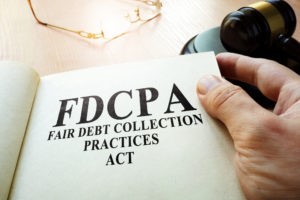
Duane Morris Takeaway: This week’s episode of the Class Action Weekly Wire features Duane Morris partners Jerry Maatman and Jennifer Riley with their report on class action settlement trends at the halfway mark of 2025.
Read our detailed breakdown of 2025 class action settlements here.
Check out today’s episode and subscribe to our show from your preferred podcast platform: Spotify, Amazon Music, Apple Podcasts, Samsung Podcasts, Podcast Index, Tune In, Listen Notes, iHeartRadio, Deezer, and YouTube.
Episode Transcript
Jerry Maatman: Hello, everyone, and welcome to the next episode of the Class Action Weekly Wire. I’m Jerry Maatman, and with me today for our special mid-year review of class action settlements is my partner, Jen Riley. Jen, welcome back to the podcast.
Jennifer Riley: Thanks so much, Jerry.
Jerry: Well, we’re halfway through 2025. What sort of developments do we see on the settlement front?
Jennifer: Thanks, Jerry. It’s been quite a ride. The data confirms what we’ve been tracking since 2022 – we’re in a new era of class action litigation, corporate defendants have been facing unprecedented settlement exposures. The total value of class action and government enforcement settlements hit $66 billion in 2022, $51.4 billion in 2023, and $42 billion in 2024. As of mid-2025, we have already reached $21.77 billion, keeping pace with those historic high numbers that I just mentioned.

Jerry: Those are enormous numbers, and obviously the snapshot for the first six months of 2025 only involved the top 5 settlements in each of these areas. So, we’re talking about over a $180 billion dollars in just three and a half years. That’s remarkable.
Jennifer: Exactly. It is the largest 3-year span of settlements in U.S. legal history. If the current trends hold, 2025 may end up right alongside those previous three years. It may not be a record breaker, but it’s definitely in that same upper tier.
Jerry: When you peel back the onion skin and dig down into the numbers, where are you seeing the highest settlement values so far in 2025?
Jennifer: That would probably be in the product liability and mass tort space. Those areas are leading by a long shot, $13.09 billion in just the first half of 2025. The next area is antitrust, which follows at $4.36 billion, and then, after that, securities fraud at $2.03 billion.

Jerry: I recall prior to Covid, one could count the number of $1 billion settlements on one or two fingers, sometimes in a 5-year period, although those are becoming more commonplace these days. Are there any standout billion-dollar settlements so far in 2025?
Jennifer: Great question. There are a few major ones, I would say the In Re College Athlete NIL Litigation – that one hit $2.78 billion. That’s the one that gave athletes retroactive compensation for missed name, image, and likeness opportunities. It’s really a historic shift. Also worth noting, Purdue Pharma’s $7.4 billion opioid-related settlement. Just last week, Purdue announced that it is preparing to send an updated bankruptcy plan and proposed settlement to a vote following a broad sign on by all U.S. states and territories.
Jerry: Way in and of themselves, those are landmark figures for those settlements. Are we seeing, as we did the last three years, increasing number of $1 billion settlements per case?
Jennifer: We are, there have been three billion-dollar settlements so far in 2025, that brings us to 37 total settlements over a $1 billion since 2022. It’s the most in any three-and-a-half-year period ever.
Jerry: Again, remarkable figures in terms of your analysis of that settlement activity. Are there particular sectors you would point out to our listeners that are worth looking at or to view as emerging areas of risk and exposure?
Jennifer: Data, breach and privacy settlements are increasingly prominent. For example, AT&T just agreed to pay $177 million dollars for a breach-related case. And Clearview AI settled for $51.75 million over biometric privacy violations. Also, discrimination and civil rights cases continue to generate large settlements, showing that the courts are still a viable forum for those systemic claims.
Jerry: Let’s talk about antitrust – that’s historically been an area where there have been very high settlements. What’s going on in that space thus far in 2025?
Jennifer: The antitrust sector is very active. The top 5 settlements in 2025 alone total more than $4 billion, with notable cases against the NCAA, CDK Global, and Perdue Farms. There’s a sustained focus on wage suppression and market manipulation. Those are key areas of concern for both the regulators and for the plaintiffs.
Jerry: The Duane Morris Class Action Review also tracks governmental enforcement settlement activity, insofar as those cases certainly have the feel look of a class action. What’s going on on that particular front with government enforcement litigation?
Jennifer: Even with the changes – still going strong. Government enforcement settlements reached over $77 million so far in 2025, covering everything from labor violations to deceptive marketing in the gaming industry. The DOJ, DOL, and state AGs have remained active, especially in sectors affecting workers and vulnerable consumers.
Jerry: If you take a holistic look at all the areas that are tracked that corporations are vulnerable to being sued over, are there any areas that are cooling down, or where the numbers are actually going down?
Jennifer: Great question, I would say securities fraud. Securities fraud is slightly down from the highs of 2023, and we’re also seeing some slowdown in TCPA-related cases, although Realogy Holdings $20 million robocall case is still making headlines over this past year, but overall, I would say most sectors are either holding steady or growing.
Jerry: Jen, I know you recently won an award and you were selected the number one most quoted and followed class action lawyer in the United States in terms of your thought leadership. Tell us about inside baseball in terms of your thoughts and insights in this particular space of what corporations can expect for the remainder of 2025.
Jennifer: Thanks, Jerry. I would say the bottom line is really that corporate defendants are operating in a legal environment where these large-scale class actions – whether driven by consumers, employees, investors, regulators – these are a constant and very costly risk. We’re really in a high-stakes phase of class action litigation right now, and there’s no indication that it’s going to slow down.
Jerry: Jen, thanks, as always, for those insights and thanks for our listeners for joining us for this week’s installment of the Class Action Weekly Wire. We’ll be sure to keep you updated on all the settlement numbers throughout the remainder of 2025, and when we debut the Duane Morris Class Action Review for 2026. I’m sure what we’re going to point out to are the enormous settlement numbers now for four years in a row. So thanks so much.
Jennifer: Absolutely. The 2026 version is going to be a must-read. Thank you, Jerry, and thank you to our listeners.


























